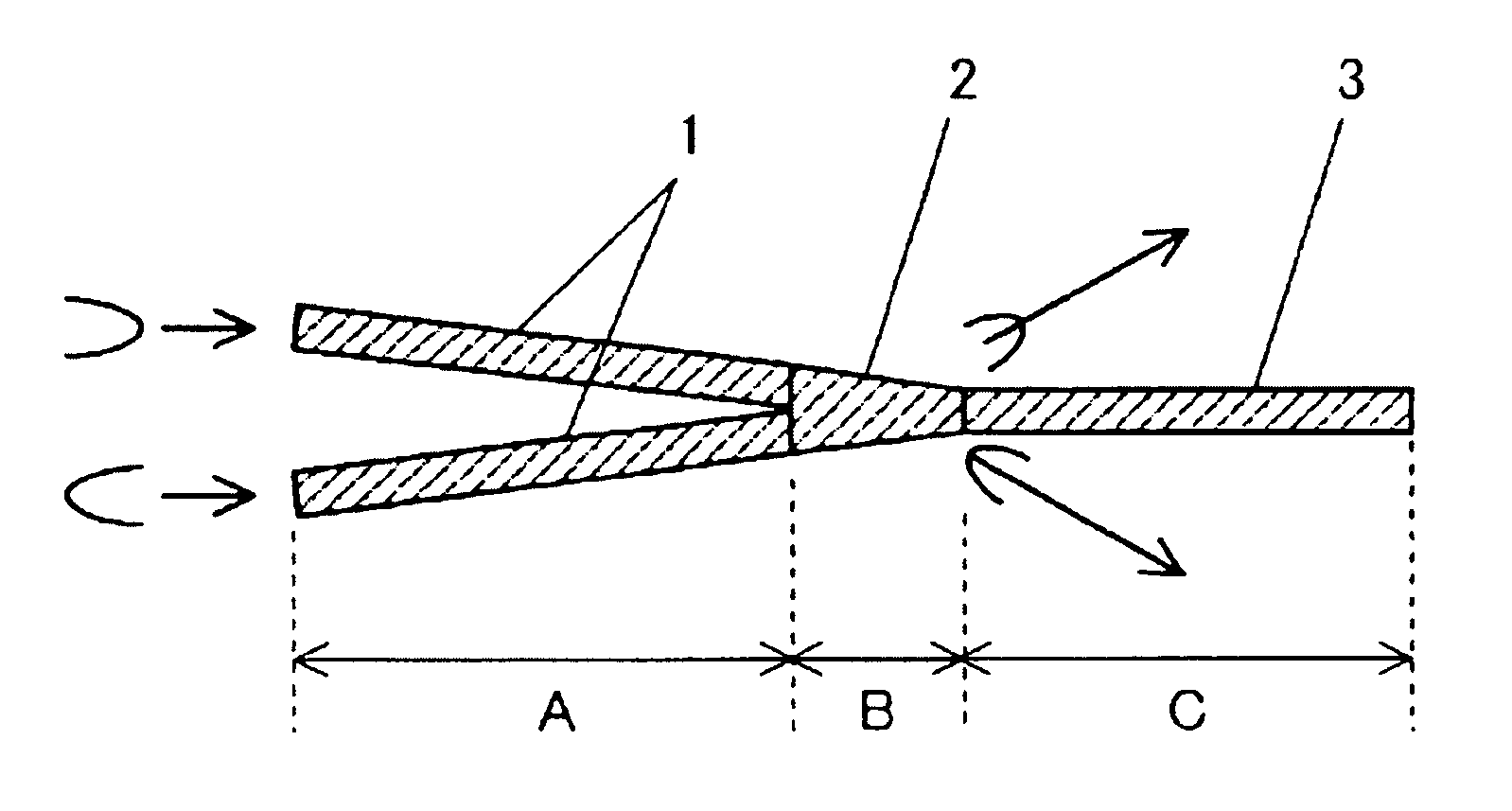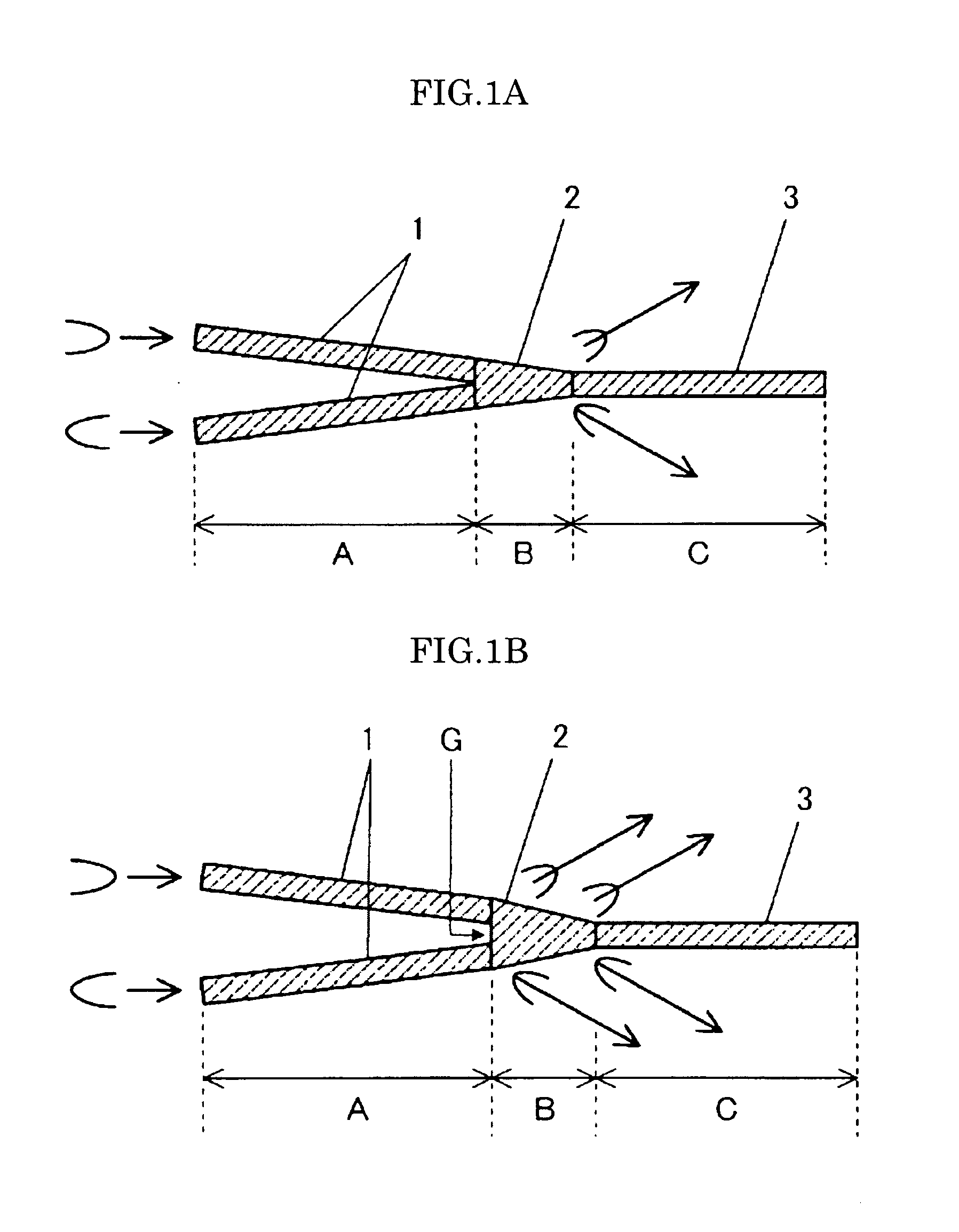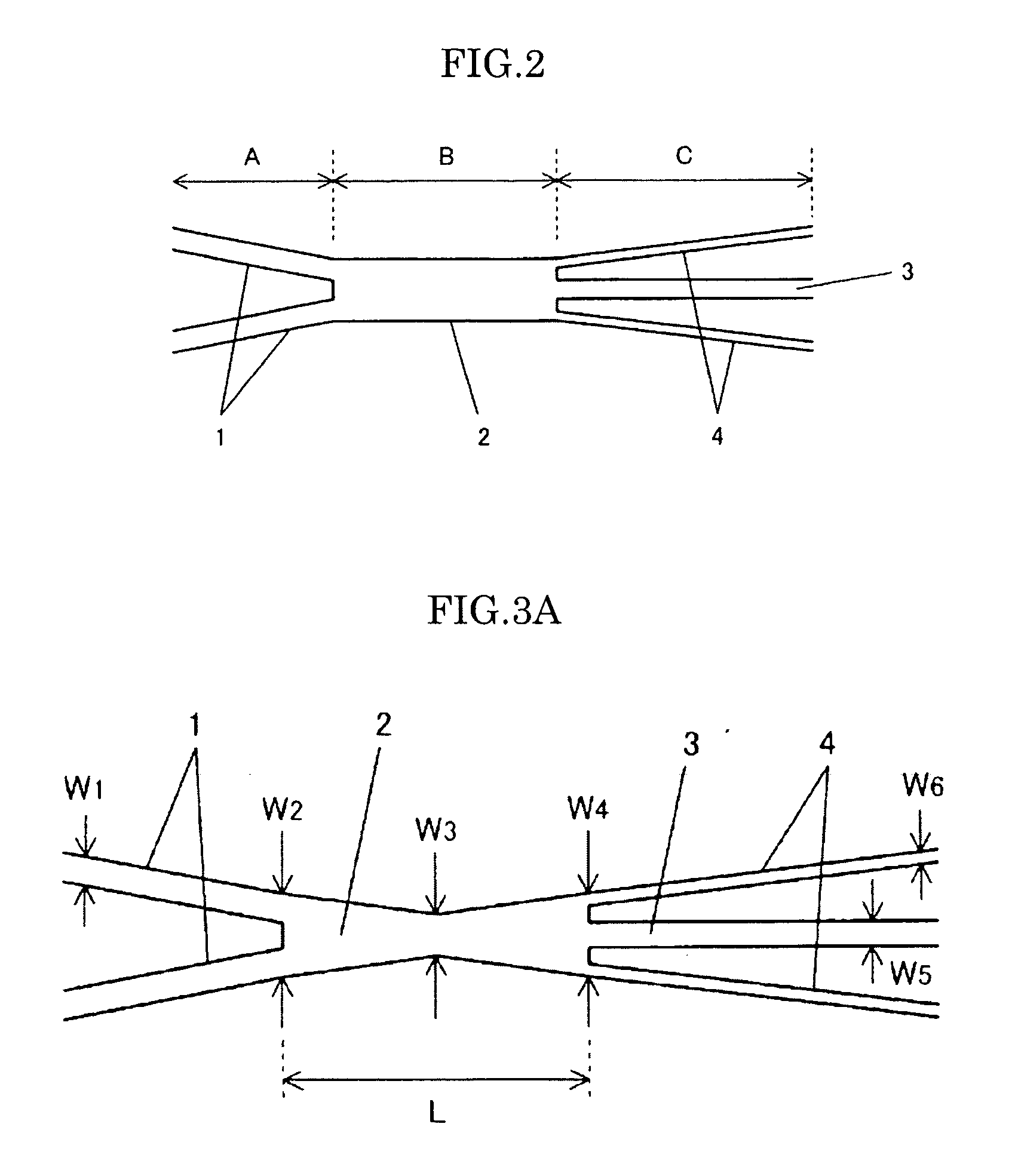Optical modulator
a modulator and optical technology, applied in the field of optical modulators, can solve the problems of degrading the optical characteristics of the optical modulator, difficult to accurately detect radiation-mode light, and difficult to separate radiation-mode light from radiation-mode mismatching, so as to effectively extract the output light from the main output waveguide, suppress the generation of radiation-mode light, and achieve the effect of stably removing radiation-mode ligh
- Summary
- Abstract
- Description
- Claims
- Application Information
AI Technical Summary
Benefits of technology
Problems solved by technology
Method used
Image
Examples
Embodiment Construction
[0031]Hereinafter, the optical modulator of the invention will be described in detail.
[0032]FIG. 2 is a diagram illustrating a waveguide shape in the vicinity of the Y-multiplexer used in the optical modulator of the invention.
[0033]The invention is characterized in that, in the optical modulator having a Mach-Zehnder type waveguide on the surface of the dielectric substrate, the waveguide 2 obtained after multiplexing using the Y-multiplexer in the output side of the Mach-Zehnder type waveguide is a multiple mode waveguide, and a subsidiary output waveguide 4 as a high-order mode waveguide is connected to a portion (the boundary between regions B and C) where the multiple mode waveguide 2 is changed to a main output waveguide 3 as a single mode waveguide. The reference numeral 1 denotes, as an arm of the MZ-type waveguide, two branching waveguides coupled in the Y-multiplexer.
[0034]The light intensity Pc of the output light of the optical modulator and the light intensity P± of the...
PUM
| Property | Measurement | Unit |
|---|---|---|
| length | aaaaa | aaaaa |
| thickness | aaaaa | aaaaa |
| thickness | aaaaa | aaaaa |
Abstract
Description
Claims
Application Information
 Login to View More
Login to View More - R&D
- Intellectual Property
- Life Sciences
- Materials
- Tech Scout
- Unparalleled Data Quality
- Higher Quality Content
- 60% Fewer Hallucinations
Browse by: Latest US Patents, China's latest patents, Technical Efficacy Thesaurus, Application Domain, Technology Topic, Popular Technical Reports.
© 2025 PatSnap. All rights reserved.Legal|Privacy policy|Modern Slavery Act Transparency Statement|Sitemap|About US| Contact US: help@patsnap.com



